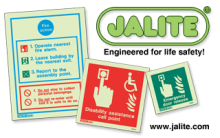Do people really know what to do when the fire alarm goes off?
Do people Really Know What To Do When The Fire Alarm Goes Off?
BS 5839 the standard for design installation and maintenance of fire detection and fire alarm systems requires the detailed analysis of the building, occupant profile, occupancy by volume and the purpose groups or activity of the organisation.
Detailed analysis should identify the needs of the organisation to determine both the arrangements and equipment required to give the appropriate alarm both sound, voice comment and if necessary visual.
The design will have an effect on the actions of occupants in conjunction with fire alarm activation. Whilst automatic detection may be part of the design, manual confirmation from call points or indeed manual security override are key to effective and successful evacuation.
The Health and Safety (Safety Signs and Signals) Regulations requires all employers to ensure employees are aware of the actions that are necessary to be taken in conjunction with fire safety signs and audible signals (fire alarms).
The Regulatory Reform (Fire Safety) Order requires the responsible person to ensure all building occupants can LOCATE, and IDENTIFY non-automatic fire safety equipment which, obviously includes fire alarm call points and door opening override devices.
Legislation also puts an obligation on the responsible person, employer and building owner to ensure that sufficient information and instruction is given to building occupants on the exact meaning of signs and signals.
Department of Communities and Local Government (DCLG) for compliance to The Regulatory Reform (Fire Safety) Order and BS 9999 : Guidance for fire safety management systems, recommend a simple fire action notice to satisfy these obligations.
Fire safety signs and notices as prescribed in BS 5499 Part 10 : 2014 is referenced in L64 Health and Safety Executive Guidance for their legislation.
When commissioning a fire alarm system in accordance with BS 5839 consultation with the responsible person, or the competent person should indicate the precise actions required to be taken dependant on evacuation strategy.
Government guidance recommends that where ever possible to keep the instruction, brief, precise and unambiguous. Whilst understanding that special, less generic instructions are required for two stage voiced command or stay put systems are encouraged and should be developed in conjunction with all stake holders.
If you have specific requirements or require assistance your fire alarm supplier should be able to assist.


